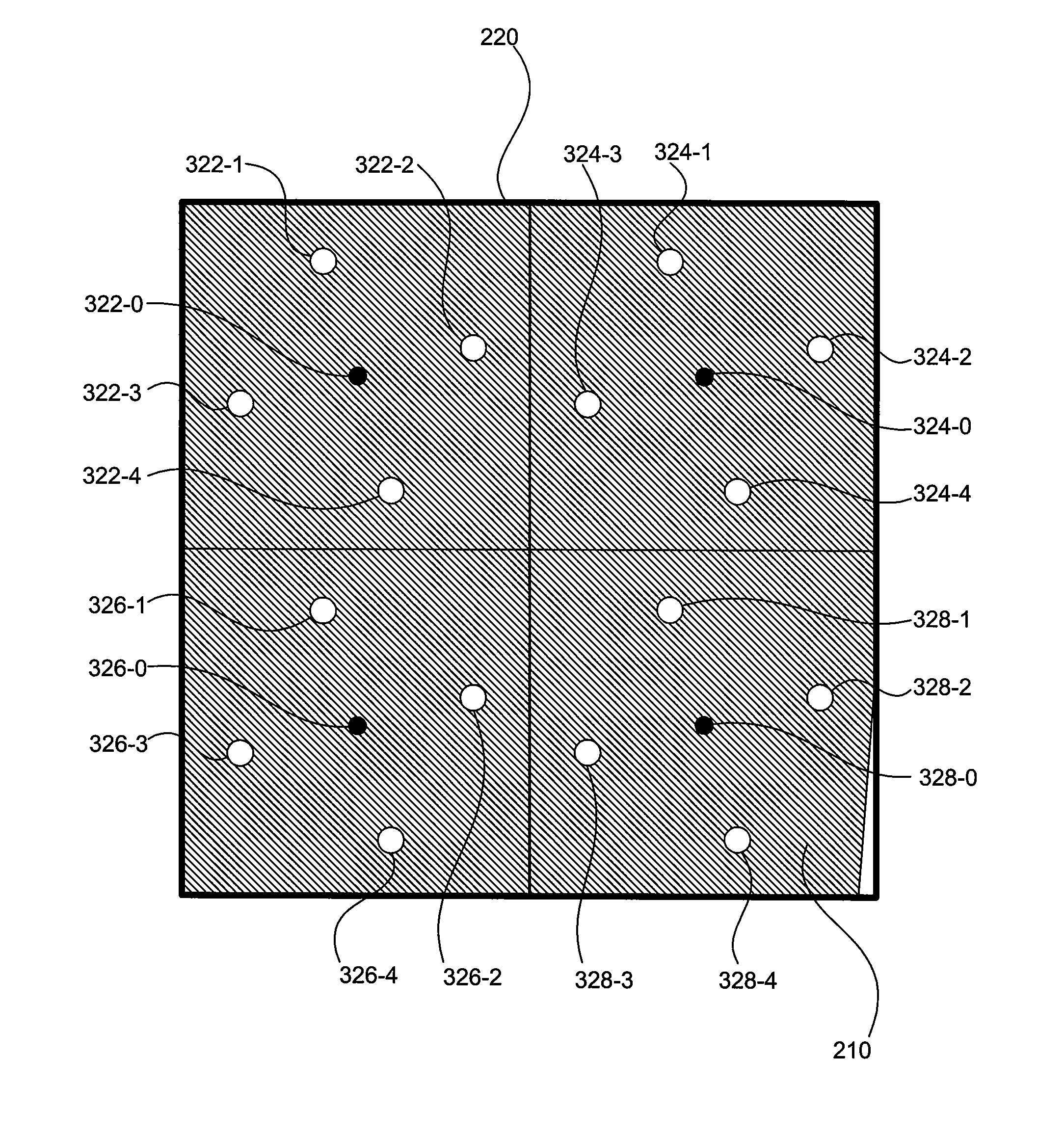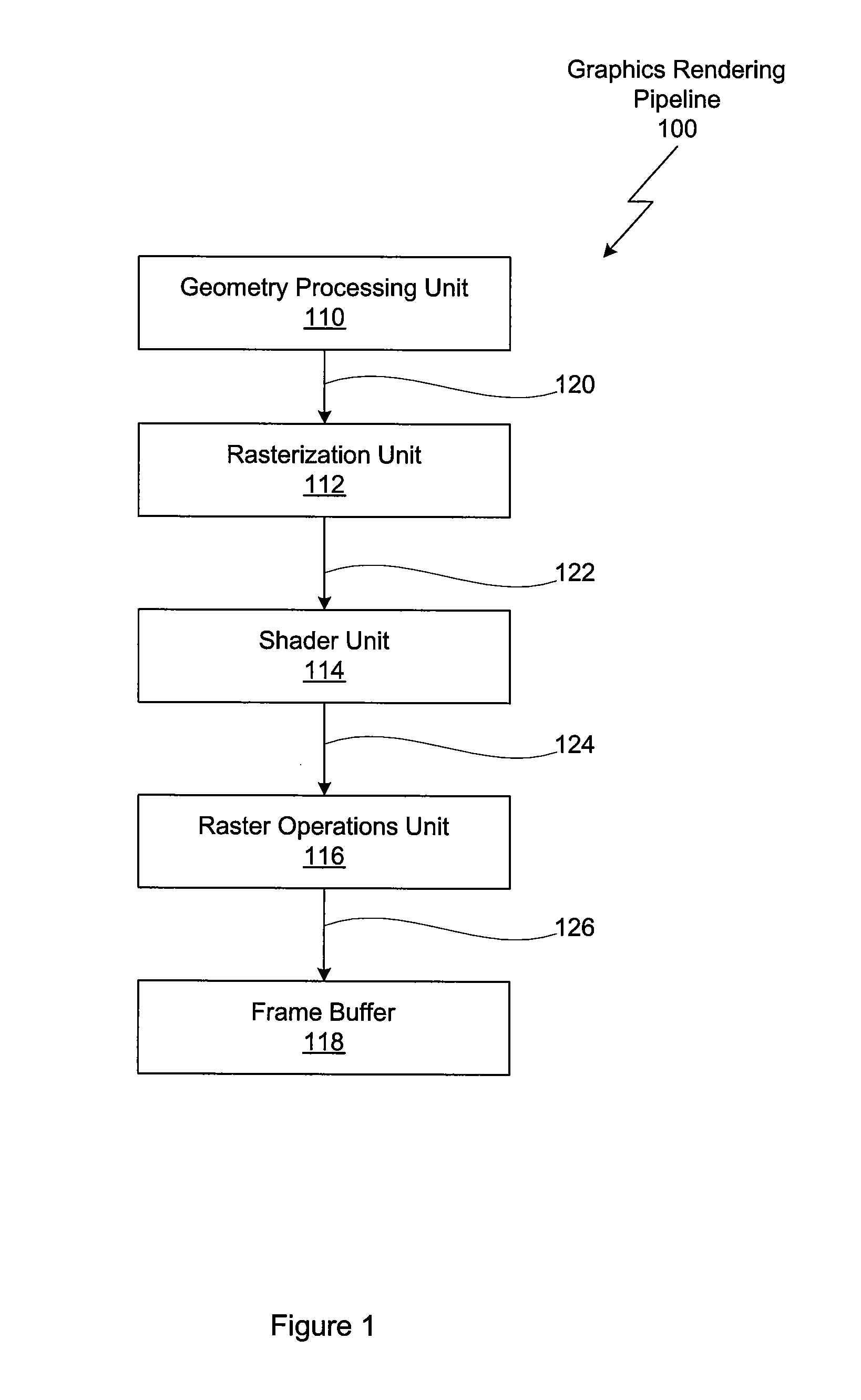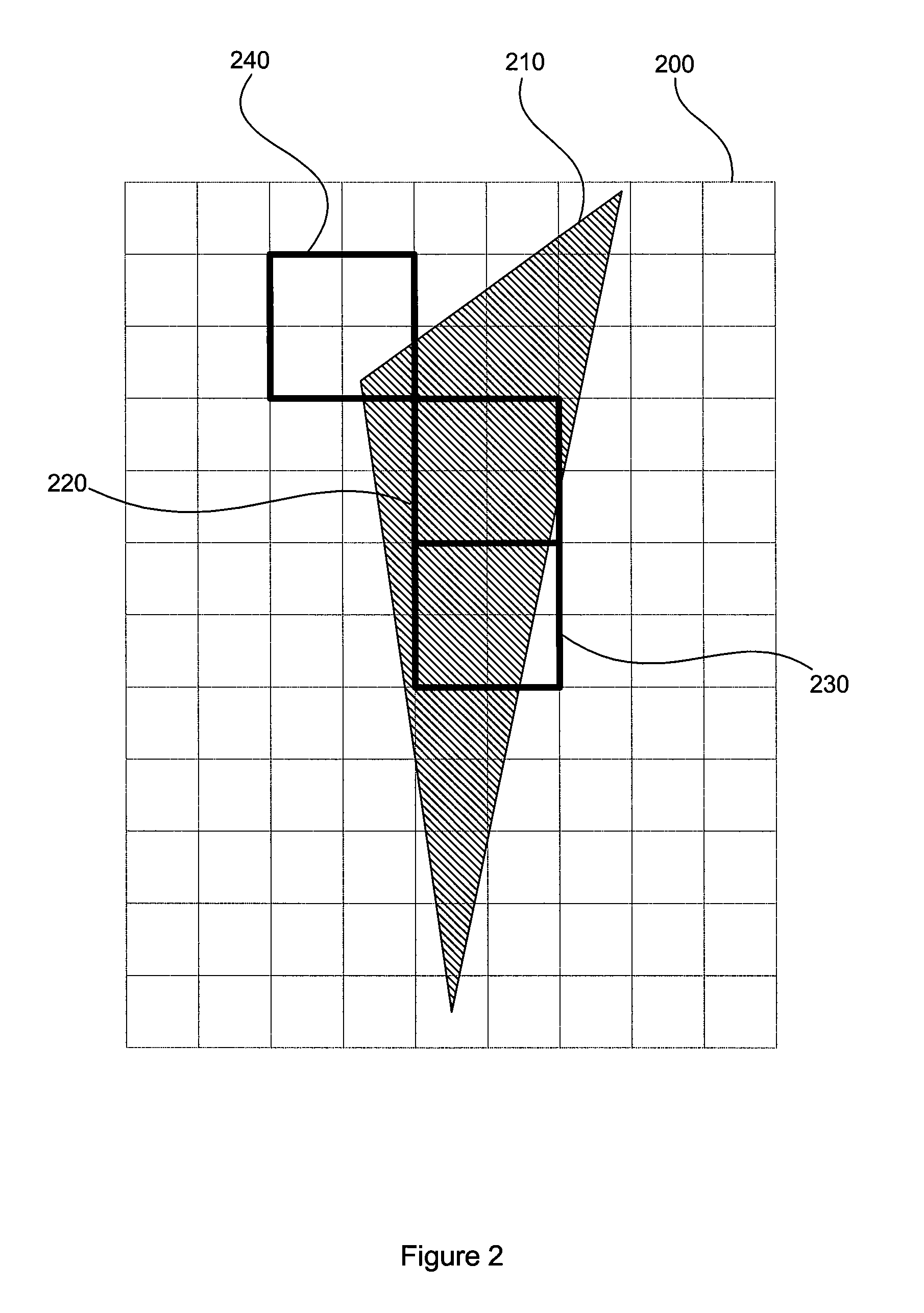Coverage adaptive multisampling
- Summary
- Abstract
- Description
- Claims
- Application Information
AI Technical Summary
Benefits of technology
Problems solved by technology
Method used
Image
Examples
Embodiment Construction
[0021]The present invention improves the quality of antialiasing in a graphics rendering engine by adaptively selecting between multisampling and supersampling on a per pixel basis. The resulting performance is very good and is generally comparable to multisampling. At the same time, the resulting quality is very good and is generally comparable to supersampling.
[0022]FIG. 1 is a conceptual diagram of a graphics rendering pipeline 100, according to one embodiment of the invention. The graphics rendering pipeline 100 includes, without limitation, a geometric processing unit 110, a rasterization unit 112, a shader unit 114, a raster operations unit 116, and a frame buffer 118.
[0023]The geometry processing unit 110 receives geometry objects, typically three-dimensional triangles, from a graphics application (not shown) and conducts geometric transforms as specified by the graphics application. The output of the geometry processing unit 110 includes geometric primitives 120, such as tri...
PUM
 Login to View More
Login to View More Abstract
Description
Claims
Application Information
 Login to View More
Login to View More - R&D
- Intellectual Property
- Life Sciences
- Materials
- Tech Scout
- Unparalleled Data Quality
- Higher Quality Content
- 60% Fewer Hallucinations
Browse by: Latest US Patents, China's latest patents, Technical Efficacy Thesaurus, Application Domain, Technology Topic, Popular Technical Reports.
© 2025 PatSnap. All rights reserved.Legal|Privacy policy|Modern Slavery Act Transparency Statement|Sitemap|About US| Contact US: help@patsnap.com



